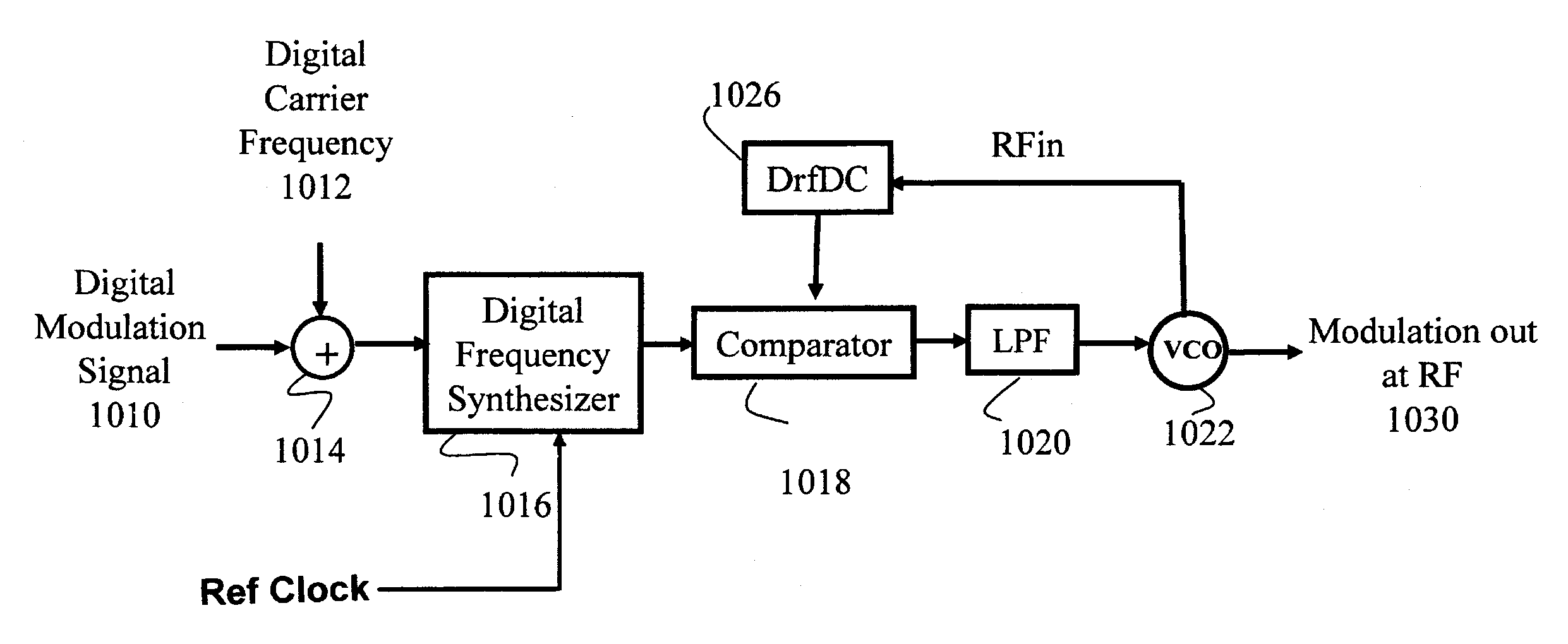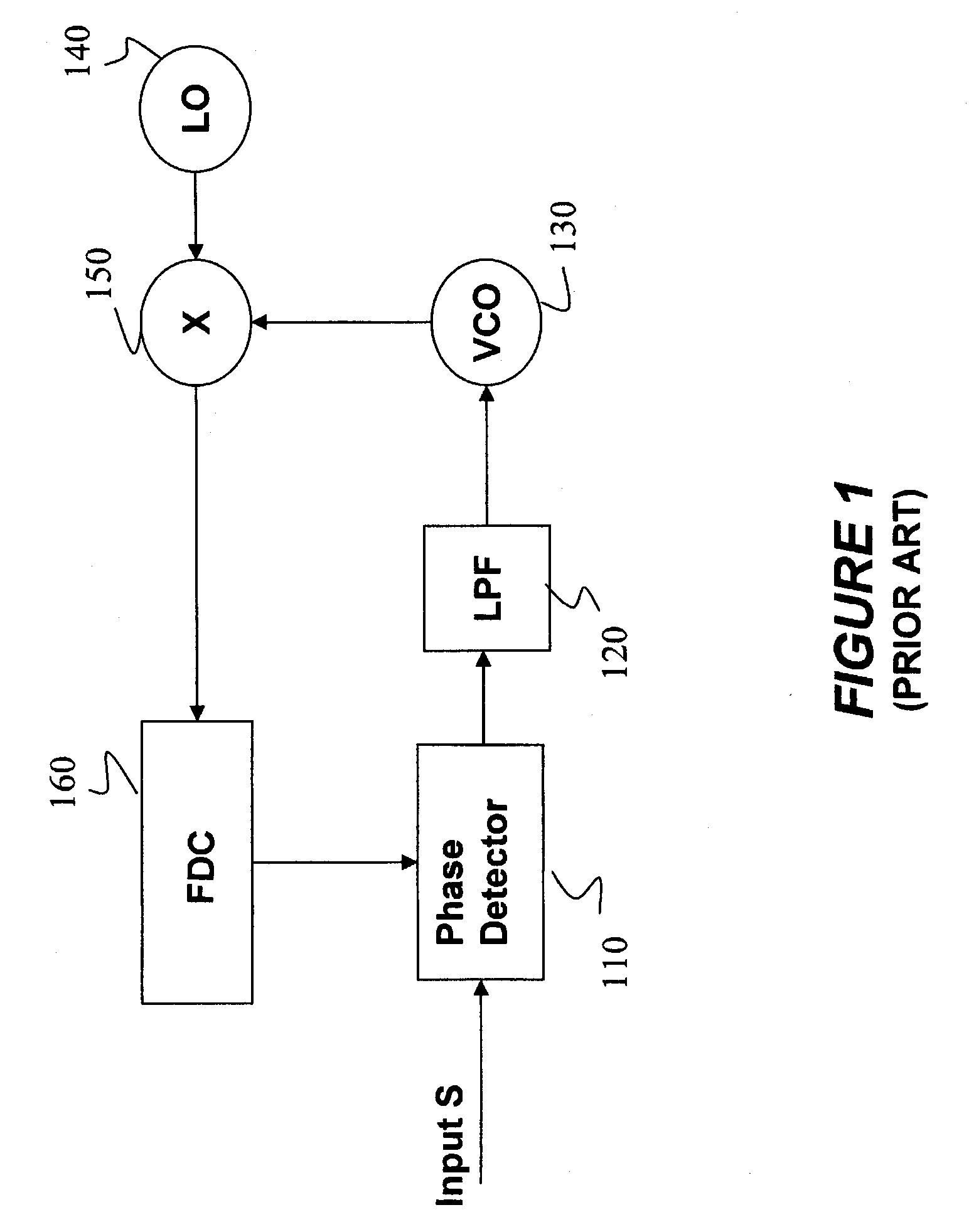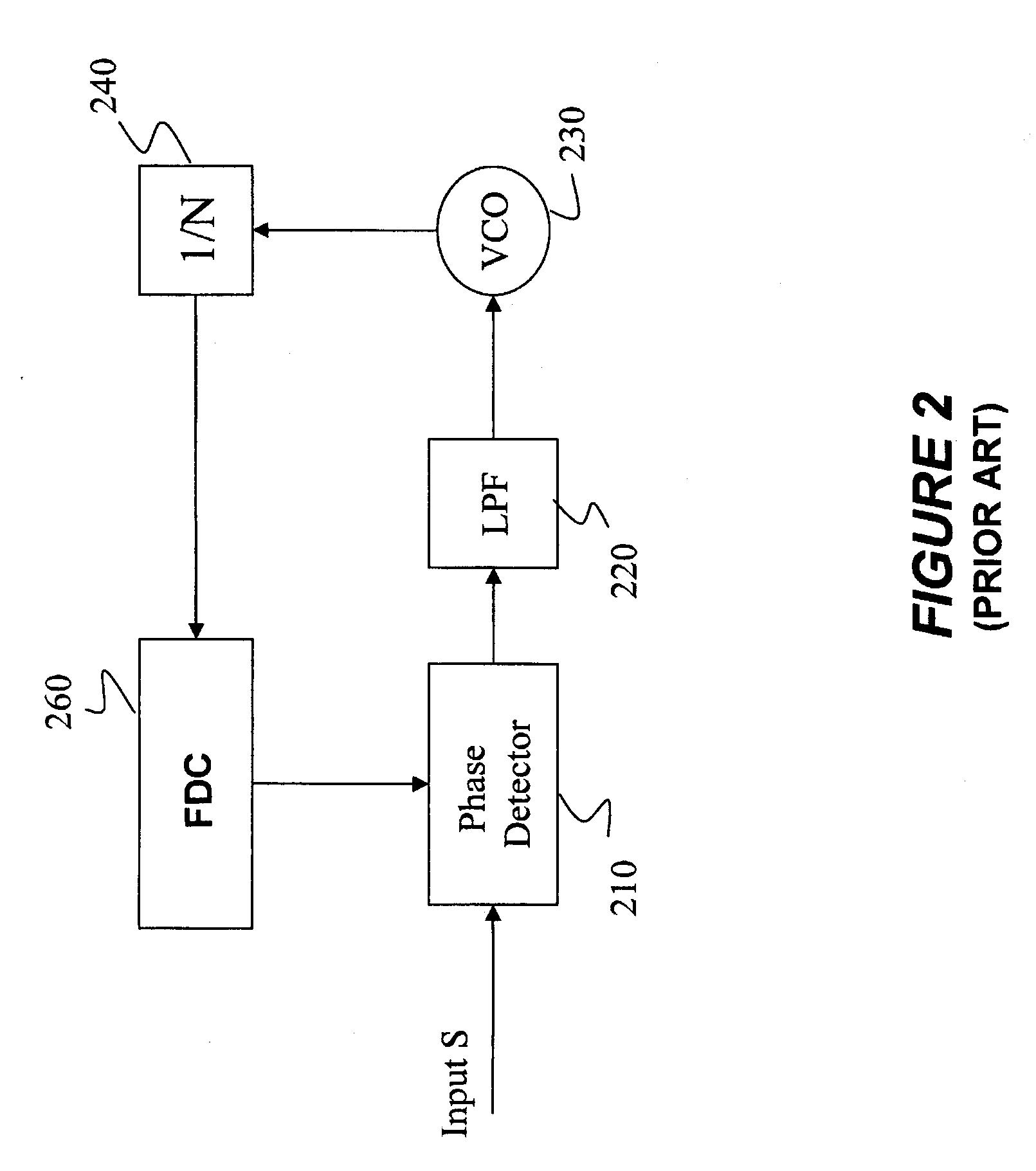Method and apparatus for direct RF to digital converter
- Summary
- Abstract
- Description
- Claims
- Application Information
AI Technical Summary
Benefits of technology
Problems solved by technology
Method used
Image
Examples
Embodiment Construction
[0035]The present invention provides a direct RF-to-digital converter (“DrfDC”) which enables directly decomposing a high frequency signal into a plurality of digital data streams for signal processing. The present invention does not require a local oscillator, a mixer or an offset PLL which have been used in conventional systems to obtain the same results. The front-end of the disclosed DrfDC decomposes the high frequency RF signal into several low frequency signals without loss of any information. The low frequency signals are processed by the back-end of the DrfDC and are converted into digital data streams. These digital data streams are then combined into one signal to represent the frequency of the input RF signal.
[0036]The digital data streams (even when combined into one signal) retain all of the level change information carried by the high frequency signal. The present invention operates with no information loss. Whereas the conventional system only captures the rising edge...
PUM
 Login to View More
Login to View More Abstract
Description
Claims
Application Information
 Login to View More
Login to View More - R&D
- Intellectual Property
- Life Sciences
- Materials
- Tech Scout
- Unparalleled Data Quality
- Higher Quality Content
- 60% Fewer Hallucinations
Browse by: Latest US Patents, China's latest patents, Technical Efficacy Thesaurus, Application Domain, Technology Topic, Popular Technical Reports.
© 2025 PatSnap. All rights reserved.Legal|Privacy policy|Modern Slavery Act Transparency Statement|Sitemap|About US| Contact US: help@patsnap.com



